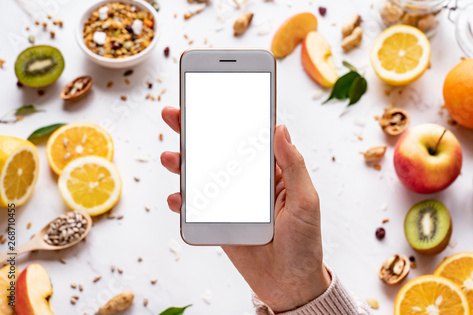Smart ordering in seafood restaurant

The Seahorse restaurant in Llandudno serves high-quality seafood, which is costly if wasted. Basic waste reduction practices were in place prior to using the ‘Your Business is Food; don’t throw it away’ (YBIF) materials from WRAP (tracking sheet and calculator).
The chef orders his produce carefully, trying not to over-order. He has learned not to be afraid of running out of a main dish during service and believes it demonstrates to the customer that the menu is constantly changing to reflect the best available daily produce and that the restaurant’s food is freshly prepared and in demand.
He takes care to keep food waste to a minimum during preparation because of cost and environmental concerns. Disposal is a challenge as allocated bin space is not adjacent to the restaurant, making the need to improve the business’s awareness of unnecessary food waste all the more pressing. He has taken action to reduce supplier packaging waste by returning polystyrene containers to the fish suppliers and produce boxes back to the produce supplier for re-use.
Careful attention to detail in the restaurant’s fresh produce buying policy, a flexible menu, the chef’s experience of consumer demand, his preparation and stock/sauces production and his record on spoilage show he is already pushing very closely to a zero pre-plate food waste level. The waste monitoring exercise under YBIF confirmed this. Smart ordering is essential as fresh fish has a very limited best-by period. Here, the chef tends to understock rather than overstock menu items.
Typically, little of the high value 'centrepiece' elements on the plate, such as crab, lobster etc., are left by customers. Even so, the YBIF exercise helped the restaurant reduce food waste even further, for instance in the areas of side dish vegetable servings and salad ingredients, that are occasionally over-ordered and returned by customers.
This YBIF case confirmed that:
- Smart purchasing and flexible menus are key to keeping food waste low
- Running out of a main dish is a better business proposition than overstocking expensive, short-life ingredients
- Using preparation scraps and shells for stocks and sauces is a best practice
- Returning packaging to produce and fish suppliers
Other food-service businesses are encouraged to try the YBIF three-day tracking sheet and calculator to give them insights into how much food they are throwing away and what it costs their business. For even more insights and detail, the seven-day tracking sheet over a month, with YBIF calculator tool helps calculate purchase costs and true waste cost values for each business. Access to the full suite of YBIF resources is available in the source information section.
